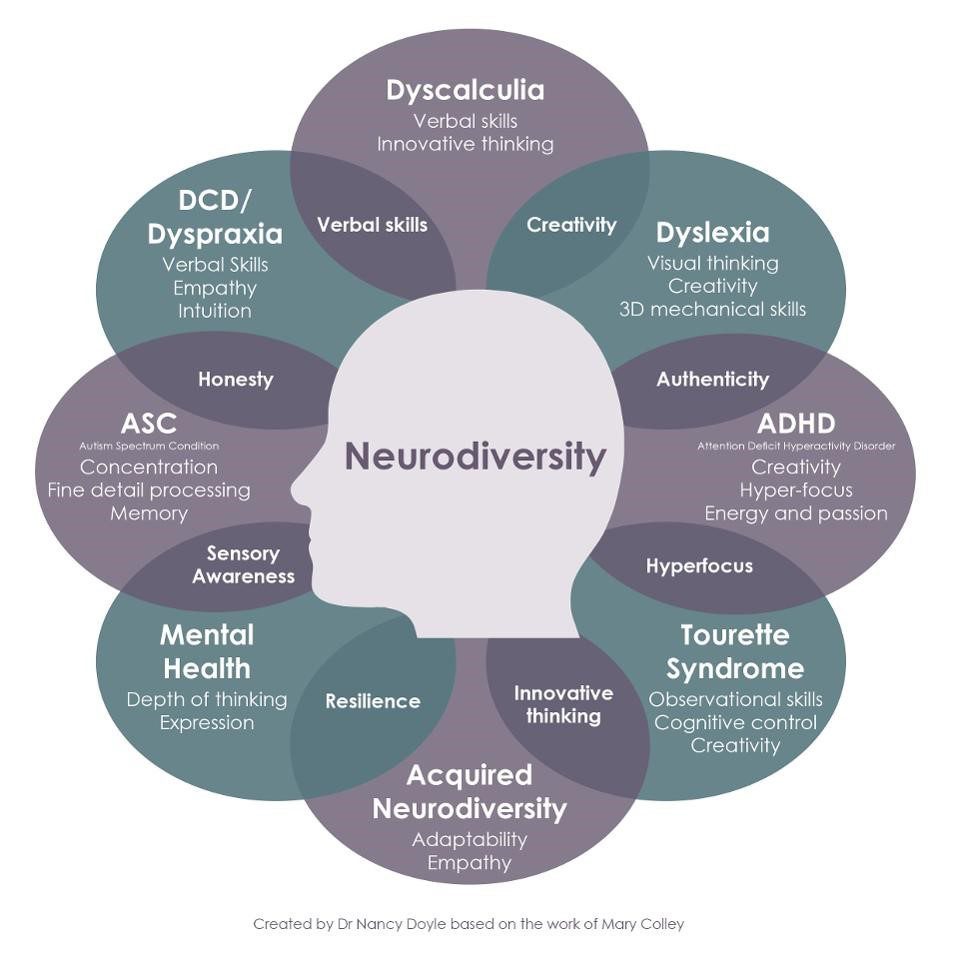This blog was written by Sparx, an education technology company reimagining the way maths is taught and learnt in schools. The Sparx programme has proven to help children improve their numeracy skills, increase their attainment in maths and nurture their confidence.
Neurodiversity describes the inherent differences in the way our brains function and process information. Most people are neurotypical. As such, their brains interpret the world in the way society might expect. They experience the typical developmental, intellectual and cognitive abilities expected for a person of their age.
However, according to Acas, around 15% of the UK population are neurodivergent. This means that their brains function differently to other people’s. Typically, we categorise people with Autism, Attention Deficit Disorder (ADHD), Dyspraxia and Dyslexia as neurodivergent. In fact, anyone experiencing a condition that impacts certain thinking skills can identify as neurodivergent.
The term helps many people re-frame the way they think about their brain. ADHD, for example, is not something to be ‘cured’. Rather, neurodiversity celebrates the differences between our brains.
With so many people experiencing different thinking patterns, how can we cater for neurodiversity in our classrooms? Here are four key tips for teachers to consider.
- Welcome different ways of learning
Neurodiversity exists in many classrooms. In order to make learning accessible for every child, teachers can consider different learning methods. Children who think differently to the majority of the class may find certain subjects or learning styles tough.
When standing in front of a neurodiverse group of children or young people, it is helpful to think about how your lesson plan might impact each pupil. You can take time to consider:
- modifying your teaching style
- adapting how you teach specific children
- spending time checking in with children to see how they’re getting on.
You may consider an online learning platform to support the work you do in school. For example, many children find that learning maths online can improve their marks.
A programme, such as Sparx, that delivers personalised and curriculum-focused lessons may ease the pressure. Sparx is able to deliver bespoke homework tasks online for children to complete. You can monitor their progress and adapt future lessons accordingly.
- Recognise children’s strengths
Many neurodivergent people have specific and significant strengths. So, as well as working on the things pupils find difficult, remember to praise them for those areas in which they thrive.
For example, some people with Autism demonstrate great attention to detail. They are often able to see patterns and links that neurotypical people do not. As a result, they may problem-solve in a completely different, equally effective, way.
- Consider parental engagement
If teachers are struggling, they should ask parents and carers to help them support children in the classroom. Family members can give plenty of insight into how their child responds to certain learning styles.
They may consider more regular communication than the scheduled parent and guardian evenings. Feeding back to parents about their child’s progress is a great way to bridge the gap between school and home. Parents of neurodivergent children may benefit from insight that you can provide in return.
- Find neuroscientific CPD training
It is important to support teachers’ professional development by continuously refreshing their knowledge. Updating your understanding around neurodivergence and the associated conditions will empower you to become an even better teacher.
Teachers are extremely well placed to experience and spot the early signs, challenges and strengths of neurodiverse children. Early diagnosis gives pupils the best opportunity to find ways of learning that make sense to them.







One important fifth way, is to empower the child to speak out with freedom when they don’t understand a concept/instruction that is being presented to them.
Every child in the class would benefit at some point from being free to say “I don’t get it, is there another way of putting that?”
There is diversity of understanding even within the neurotypical group.
ALL students would benefit from a classroom culture that tells them it is their right to respectfully request that their learning be presented to them in a way that they can ‘get’
Wholeheartedly agree! Creating classroom communities of safety and respect are so crucial in supporting students’ identities as learners. I often notice students bristle when I visit classrooms and ask them questions. I have to tell them, “I don’t think you’re wrong, I just want to know more about your thinking.” As we support students to feel comfortable with teacher inquiry, teachers in turn need to encourage–and be comfortable with–student inquiry, as well. How can we know students as learners if we don’t let them tell us what they’re not sure about?
Completely agree with the above but unfortunately teachers are not always receptive to change and often leaving the child feeling ill supported at best and humiliated for not getting it at worst!
Agreed..but how would you teach a student with autism, adhd and is behavioural (ODD)??
These four ways to support neurodiversity in the classroom are fantastic! Embracing individual differences can create a more inclusive learning environment. Thank you to the author for sharing these helpful tips!